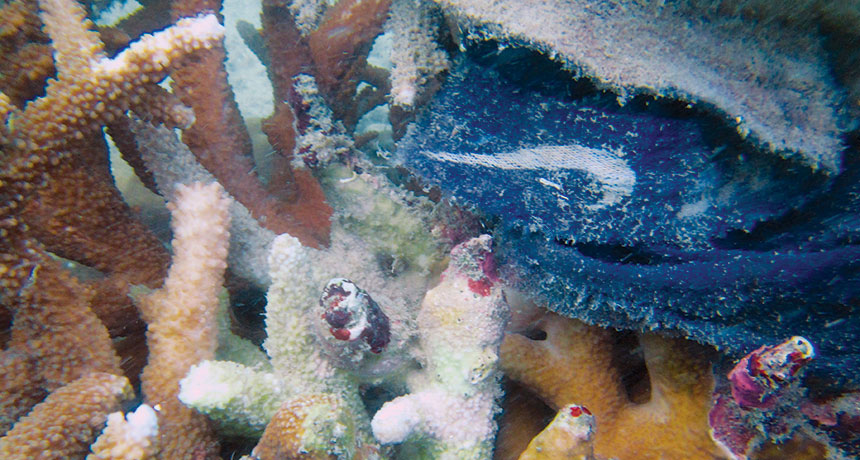Plastic pollution increases risk of devastating disease in corals
More than 11 billion pieces of the long-lived pollutant litter Asia-Pacific reefs

DON’T DO IT A plastic-based, polyester towel is caught on diseased corals, which have turned white. Known to harbor pathogenic bacteria, plastic is increasing the risk of disease at scores of reefs.
J. Lamb







